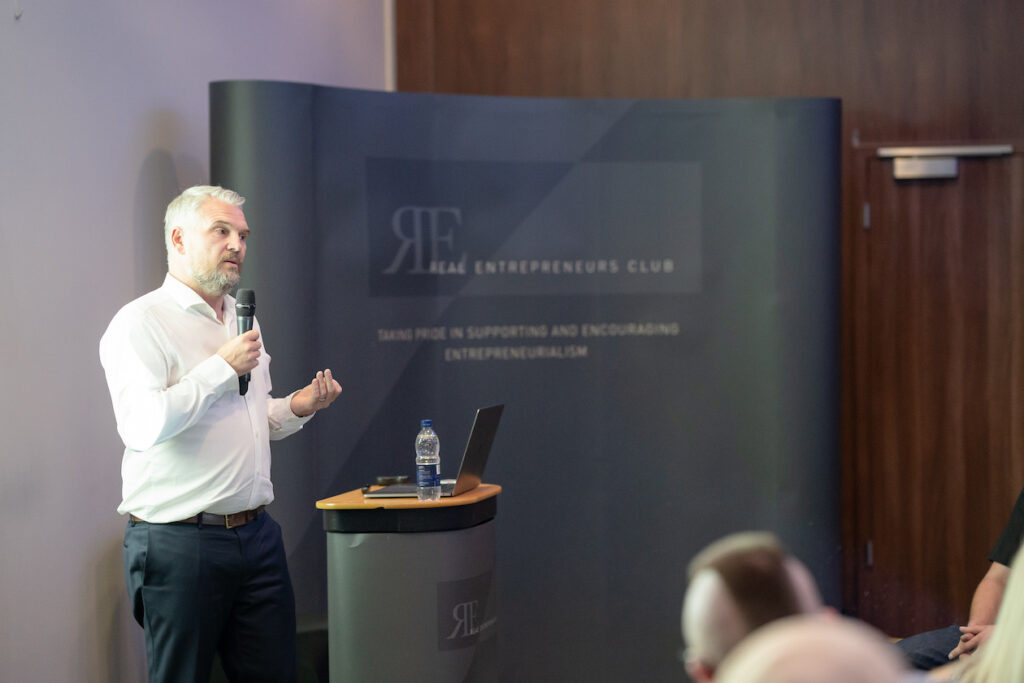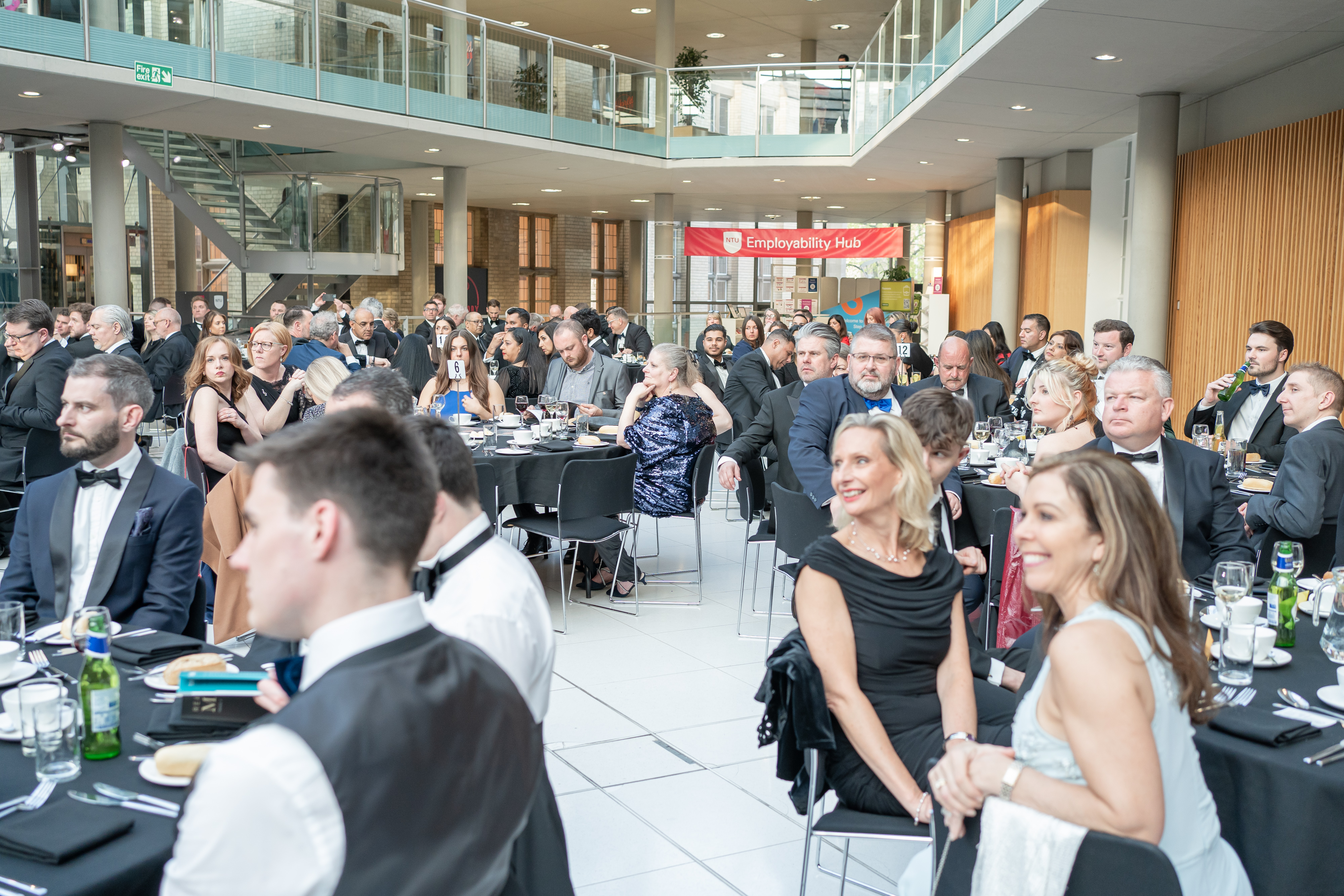Maximising corporate sponsorship for business events: A comprehensive guide
Events serve as invaluable opportunities to connect, learn, and showcase your brand, but participation can be costly, so maximising corporate sponsorship is vital.
By tactically leveraging sponsorship, businesses can amplify their presence, forge meaningful connections, and achieve substantial ROI.
There are many intricacies to maximising corporate sponsorship for various types of business events, including networking events, business awards, and specific industry recognitions.
Understanding the value of corporate sponsorship
1. Align sponsorship objectives with business goals
Before embarking on any sponsorship venture, it is imperative to clearly define your objectives. Are you looking to increase brand visibility, generate leads, establish thought leadership, or perhaps all of the above? Understanding your goals will serve as the north star, guiding your selection process and providing a benchmark for measuring the success of your sponsorship endeavours.
Sponsorship goals can encompass a wide array of objectives, from enhancing brand awareness and driving lead generation to establishing industry authority and fostering community engagement. For instance, if your primary goal is lead generation, you might focus on events with a track record of attracting a high concentration of potential clients or collaborators. Conversely, if thought leadership is your aim, seek out events that offer speaking opportunities or panel discussions where you can share your expertise and insights.
It’s also important to establish key performance indicators (KPIs) that align with your objectives. These could include metrics like lead conversion rates, website traffic from event-related sources, or social media engagement generated by your sponsorship efforts. By setting clear, measurable goals, you create a framework for evaluating the impact of your sponsorship and making data-driven adjustments for future endeavours.
2. Identify relevant events
Not all events are created equal. Choosing the right events to sponsor is paramount to achieving a meaningful return on your investment. To do so, conduct thorough research on potential events to ensure they align with your target audience, industry focus, and overarching business goals.
Begin by examining the event’s historical data, such as attendee demographics, industry representation, and past sponsors. This information provides valuable insights into whether the event’s audience aligns with your target market. Additionally, consider the event’s reputation within your industry and the level of influence it commands. Events with a strong track record of attracting key players and thought leaders in your field present prime opportunities for sponsorship.
Furthermore, assess the event’s format and agenda. Evaluate whether it offers ample opportunities for networking, knowledge-sharing, and brand exposure. Events that incorporate panel discussions, workshops, and interactive sessions tend to foster deeper engagement among attendees, making them more conducive to successful sponsorship.
3. Leverage brand identity
Consistency is key when it comes to brand identity. Ensure that your brand’s visual elements and messaging are seamlessly integrated into all materials associated with the sponsored event. This includes but is not limited to logos, banners, promotional materials, and the attire of your representatives.
Maintaining a cohesive brand identity across all touchpoints reinforces brand recognition and fosters trust among event attendees. It also helps create a unified and memorable experience, reinforcing your brand’s values and messaging in the minds of those you interact with.
Consider the event as an extension of your brand’s ecosystem. Align the colour schemes, typography, and overall aesthetic with your existing brand guidelines. This not only strengthens your brand’s presence at the event but also ensures a seamless transition for attendees who may engage with your brand post-event.
 Sponsoring networking events
Sponsoring networking events
1. Strategic booth placement
The physical location of your booth can significantly impact its visibility and effectiveness. To maximise your presence, strategically position your booth in high-traffic areas. Entrances, food stations, and key presentation stages are prime locations that naturally attract a large number of attendees.
By situating your booth in close proximity to these high-traffic zones, you increase the likelihood of capturing the attention of a diverse range of event participants. However, it’s important to strike a balance – while high-traffic areas are desirable, ensure that your booth isn’t overshadowed by neighbouring exhibits or lost in a crowded space.
Consider the flow of foot traffic throughout the event and strategically position your booth to intercept attendees as they move from one area to another. Additionally, take advantage of any floor plans or layouts provided by event organisers to strategically choose your booth’s placement.
2. Interactive engagement
One of the most effective ways to leave a lasting impression at a networking event is through interactive engagement. Passive booths with static displays may struggle to capture and retain the attention of busy attendees. To overcome this challenge, incorporate elements that encourage participation and foster meaningful interactions.
Introduce activities or experiences that resonate with your brand and provide value to attendees. This could include live demonstrations, interactive games, or engaging presentations. These interactive elements not only draw attendees to your booth but also create memorable experiences that leave a positive impression of your brand.
When planning interactive engagements, consider the interests and pain points of your target audience. Tailor your activities to address their needs and showcase how your products or services offer practical solutions. By aligning your interactive components with the interests of attendees, you increase the likelihood of meaningful interactions and potential lead generation.
3. Branded giveaways
Branded giveaways serve as tangible reminders of your brand long after the event concludes. When done strategically, they can be powerful tools for increasing brand recall and sparking post-event conversations.
When selecting giveaways, opt for items that are both relevant to your brand and valuable to attendees. Consider the practicality, durability, and uniqueness of the items. High-quality, useful giveaways are more likely to be retained and utilised by recipients, ensuring prolonged exposure to your brand.
Additionally, incorporate your brand’s visual elements and messaging into the design of the giveaways. This reinforces brand recognition and helps establish a visual association between the giveaway item and your brand. Whether it’s custom-branded merchandise, informational pamphlets, or exclusive discounts, ensure that each giveaway aligns with your brand’s identity and adds value to the recipient.
4. Host a memorable after-party
While the main event provides a platform for networking and engagement, hosting an exclusive after-party can elevate the overall experience for attendees. This additional touchpoint allows for more relaxed and social interactions, providing a unique opportunity to deepen connections and leave a lasting impression.
When planning an after-party, consider factors such as venue selection, catering, and entertainment. Choose a venue that offers a comfortable and inviting atmosphere conducive to meaningful conversations. Arrange for a variety of food and beverage options to cater to different preferences and dietary restrictions. Additionally, incorporate entertainment or activities that encourage mingling and foster a lively atmosphere.
Leverage the after-party as an extension of your brand experience. Incorporate elements of your brand’s identity into the decor, signage, and overall ambiance of the event. This reinforces brand recall and ensures that attendees associate the positive experience with your brand.
Sponsoring business awards
1. Category selection
Choosing the right award categories to sponsor is a critical step in maximising the impact of your sponsorship. Each category represents a unique opportunity to align your brand with specific aspects of your industry or expertise. By strategically selecting categories that resonate with your brand’s values and offerings, you position yourself as a relevant and valuable contributor to the event.
Start by thoroughly reviewing the available award categories and assessing their relevance to your business. Consider factors such as alignment with your industry focus, expertise, and target audience. For example, if your company specialises in innovative technology solutions, sponsoring a category related to technological innovation or digital transformation would be a natural fit.
Additionally, consider the visibility and prestige associated with each category. Sponsoring a high-profile category with a strong industry presence can elevate your brand’s recognition and credibility. However, don’t overlook niche categories that may offer opportunities for targeted exposure within specific segments of your market.
2. Create impactful presentations
When you have the privilege of presenting an award, seize the opportunity to make a memorable impression. Craft a presentation that not only highlights the significance of the award but also showcases your brand’s expertise and contributions to the industry.
Begin by researching the nominees in the category you are presenting. Familiarise yourself with their achievements, innovations, and unique contributions to the industry. During your presentation, acknowledge the nominees’ accomplishments and emphasise the positive impact they have made.
Integrate your brand’s messaging and values into your presentation to reinforce your presence and leave a lasting impression. Share insights, success stories, and the benefits of your product or service in a way that resonates with the audience and aligns with the spirit of the award.
3. Leverage the association
Collaborating with award organisers provides a valuable opportunity to amplify your sponsorship impact. By actively engaging with organisers, you can co-create content and promotional materials that elevate your brand’s visibility and association with the event.
Initiate discussions with event organisers to explore opportunities for joint marketing efforts. This could involve co-branding marketing collateral, such as event posters, brochures, or digital assets. Additionally, consider co-authored press releases or articles that highlight your sponsorship involvement and the significance of the award.
Engage with the event’s digital presence through social media platforms, websites, and email newsletters. Leverage the event’s official channels to showcase your brand’s association with the award and extend your reach to a broader audience. Collaborative marketing efforts with award organisers can significantly enhance the exposure and impact of your sponsorship.
Sponsoring specific industry awards
1. In-depth knowledge sharing
Sponsoring specific industry awards presents a unique opportunity to showcase your in-depth knowledge and expertise. Take advantage of this platform to offer valuable insights, solutions, and thought leadership that resonate with your target audience.
Consider hosting workshops, panels, or presentations that delve into pertinent industry topics or emerging trends. Share practical strategies, case studies, and actionable takeaways that demonstrate your company’s depth of knowledge and its ability to address the challenges faced by industry professionals.
Tailor your content to address the specific pain points and interests of your target audience within the industry. By providing valuable, relevant information, you position your brand as a trusted resource and thought leader, further solidifying your presence within the industry.
2. Engage with nominees
Building relationships with award nominees can be a powerful way to enhance your brand’s impact and demonstrate support for industry excellence. Consider hosting pre-event meet-ups, exclusive sessions, or networking opportunities specifically for nominees.
These interactions offer a platform for meaningful conversations and relationship-building. Engage with nominees to gain insights into their experiences, challenges, and aspirations within the industry. This information can be invaluable for tailoring your sponsorship efforts and refining your messaging to better address the needs of industry professionals.
Express genuine interest in the accomplishments and contributions of nominees. Acknowledge their achievements and offer your support, whether through mentorship, collaboration, or other forms of assistance. This demonstrates your commitment to fostering industry growth and showcases your brand as a supportive ally to industry professionals.
3. Post-event content creation
Maximise the impact of your sponsorship by leveraging the event to create valuable, evergreen content. Capitalise on the momentum generated by the award event to produce content that showcases your brand’s involvement and expertise.
Consider creating blog posts, case studies, webinars, or whitepapers that highlight the insights, innovations, and best practices discussed during the event. Incorporate your brand’s key takeaways and contributions into the content to reinforce your position as a thought leader in the industry.
Promote this content through various channels, including your website, social media platforms, and email newsletters. Share it with your audience to extend the reach of your sponsorship impact and provide ongoing value to industry professionals.
Measuring ROI and post-event follow-up
1. Track key metrics
Effectively measuring the return on investment (ROI) of your sponsorship is essential for assessing the success of your participation in the event. By tracking key performance indicators (KPIs), you gain valuable insights into the impact of your sponsorship efforts.
Start by identifying the specific metrics that align with your sponsorship objectives. These may include lead generation metrics, website traffic from event-related sources, social media engagement, or brand visibility metrics. Implement tracking mechanisms, such as unique URLs, UTM parameters, or event-specific landing pages, to accurately monitor the performance of your sponsorship activities.
Analyse the data collected to evaluate the effectiveness of your sponsorship. Compare key metrics to your predefined KPIs to determine whether you met, exceeded, or fell short of your goals. Use these insights to refine your sponsorship strategy for future events and make data-driven decisions to optimise your ROI.
2. Thank-you campaigns
Expressing gratitude is a powerful way to strengthen relationships and leave a positive impression on event organisers, attendees, and fellow sponsors. Craft personalised thank-you messages or gestures to convey your appreciation for their contributions to the event’s success.
Send thank-you notes to event organisers, acknowledging their hard work and dedication in orchestrating a successful event. Highlight specific aspects of the event that you found particularly valuable or well-executed. This not only demonstrates your appreciation but also establishes a positive rapport for future collaborations.
Extend your gratitude to event attendees who engaged with your brand. This could be through personalised follow-up emails, social media messages, or even handwritten notes. Acknowledge their participation and express your interest in continuing the conversation or providing additional value based on their interests and needs.
Additionally, acknowledge the contributions of fellow sponsors. Collaborative efforts with other sponsors often play a significant role in the overall success of the event. Recognise their contributions and express your interest in potential future collaborations or partnerships.
3. Post-event content distribution
Leverage the content generated during the event to extend its impact beyond the immediate timeframe. Share event highlights, insights, and your brand’s role in its success through various distribution channels.
Create post-event content that encapsulates the key takeaways, innovations, and discussions that occurred during the event. This could include event recaps, video highlights, or in-depth articles that showcase your brand’s involvement and contributions.
Disseminate this content through your digital channels, including your website, blog, social media platforms, and email newsletters. Leverage relevant hashtags and tags to amplify the reach of your content within the event’s community and beyond.
Encourage further engagement by inviting your audience to share their own insights or reflections on the event. Foster discussions around the event’s themes and topics to maintain an ongoing connection with your audience.
Conclusion
By putting these strategies to good use, businesses can unlock the full potential of their investment, maximising corporate sponsorship, and elevating their event marketing efforts to new heights.
Remember, the key to successful corporate sponsorship lies in thoughtful planning, execution, and post-event follow-up.
With a strategic approach, businesses can forge meaningful connections, amplify their brand’s presence, and achieve substantial ROI from their sponsorship endeavours.





